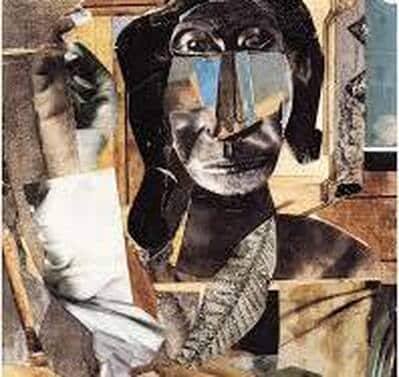Ruth Leon recommends… Romare Bearden/Major Jackson – Met
Ruth Leon recommendsRomare Bearden/Major Jackson – Met
Romare Bearden died in 1988. I was lucky enough to meet him once and he kindly signed a poster for me which I still have. By that time he was possibly the most lauded and appreciated living African-American artist.
Here is an article and poem from the Met’s Persepectives series by the author and poet, Major Jackson, about Bearden which gives a unique slant on his work.
Born in 1911, Bearden was 53 years old when he made his first series of collages. He had already had several careers. As a visual artist, he made cartoons and illustrations for various magazines and newspapers in the 1930s, works inspired by religion in the 1940s, and abstract paintings in the 1950s. He was also a successful songwriter, and a caseworker for the New York City Department of Social Services, a job he held until 1969.
Highly politically conscious, in 1963, Bearden hosted a number of other Black artists at his Canal Street studio to discuss how to support the forthcoming March on Washington for Jobs and Freedom, organized by Martin Luther King Jr. and others. This group eventually adopted the name Spiral, and Bearden suggested that they engage in collage as a collaborative art-making activity. While that project never materialized, his own facility with the medium flourished.
Using a broad range of images, colours, and textures clipped from a variety of sources, Bearden produced his first group of small collages shortly after this meeting; they focused on elements of Black life past and present. The works transcended figuration, with their overlapping planes and torn edges of different paper fragments, but had recognizable subjects, like a busy New York City street. He also depicted the Conjur Women he remembered from his time as a child in Mecklenburg County, North Carolina. “The Conjur Woman was essential, people went to her for medication and advice on health and personal affairs,” Bearden explained, “but she was also feared, in that through her knowledge of certain herbs, roots, and mysterious practices, she could put a spell, or a ‘conjur,’ on a person.”
As he would do throughout his career, Bearden experimented with his own artworks, turning these intimate collages into large-scale photostats.
In 1971 Bearden became only the second Black artist to receive a solo exhibition at The Museum of Modern Art. The major survey show included the Museum’s newly acquired Patchwork Quilt. Larger in scale, rich in colour and in the diversity of material used, including printed coloured papers and fabric scraps, this collage shows significant development in Bearden’s collage techniques, which he would continue to refine until the last decade of his life.
Bearden once described his visual art practice as one of constant discovery: ”I am trying to find out what there is in me that is common to, or touches, other men.” Bearden was the first art director of the Harlem Cultural Council, co-founded the Cinque Gallery to provide exhibition opportunities for young Black artists, and co-authored the major publication A History of African-American Artists: From 1792 to the Present.






Comments